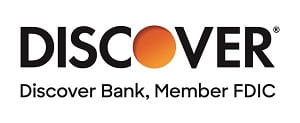Assets can impact your eligibility for financial aid. This article helps you understand how assets are assessed.
When you file your Free Application for Federal Student Aid (FAFSA®) (and some other financial aid forms, like the CSS Profile™), you’ll have to answer a series of questions about both your income and your financial assets. (If you’re a dependent student, you’ll also be asked about your parents’ income and assets.)
An important thing to keep in mind before you keep reading. Families with enough assets to affect the student’s eligibility of need-based aid, will likely have enough income to affect the student’s eligibility for need-based aid before assets are even considered.
- For most students and parents, the FAFSA will consider certain assets when determining financial aid eligibility.
- Asset reporting is different for the FAFSA and the CSS Profile
- Assets are weighed more heavily for student assets versus parent assets
- 529 plans owned by the parent, student, or other relative may impact financial aid.
- There are some ways you can reduce the impact of assets on the FAFSA, like maintaining retirement plan contribution, or paying down consumer debt.
- It's always best to have a conversation with a financial advisor before making changes to your financial strategy.
Reportable vs. Non-Reportable Assets and Debts
The first thing to understand is that when it comes to the FAFSA, some types of assets have to be reported — and others don’t.
Note: Some students and parents aren’t even required to answer the questions about assets. You’ll get a pass if you are below the income threshold for the year and file certain types of tax returns. Certain states, like California, do require you to answer questions about assets to determine eligibility for state aid, even if you aren’t required to answer those questions for federal aid purposes.
Reportable assets
*You are required to list these on your FAFSA:
- Your cash on hand — and whatever you have in your checking and savings account(s) as of the date you file the FAFSA.
- Other financial assets/investments, such as brokerage accounts, certificates of deposit (CDs), stocks, bonds, mutual funds, money market accounts, commodities, precious metals, the vested portions of stock options and restricted stock units, exchange-traded funds (ETF), hedge funds, trust funds, private equity, and other investments.
- Real estate (other than the family’s principal place of residence), real estate investment trusts (REIT), loans held, installment contracts, trust funds, private equity, and other investments.
- Uniform Gift to Minors Act (UGMA) and Uniform Transfer to Minors Act (UTMA) accounts, are reported as assets of the account owner (you, the student), not the custodian.
- College savings plans (529 college savings plans, prepaid tuition plans, and Coverdell education savings accounts) are reported as an asset of the account owner, not the beneficiary.
Non-reportable assets
*You are not required to list these on your FAFSA:
- The net worth of your family’s principal place of residence (the family home).
- The net worth of a family farm (if it is the family’s principal place of residence and you and/or your parents materially participate in the farming operation).
- Qualified retirement plans such as 401(k) plans, 403(b) plans, pension plans, annuities, traditional IRAs, Roth IRAs, Keogh, SEP and SIMPLE plans.
- Life insurance policies, including cash value and whole life insurance policies.
- Personal possessions, such as clothing, furniture, books, cars, boats, computer equipment and software, television and stereo equipment, music collections, jewelry, coin, stamp, art, and wine collections.
Note: Some of these assets do have to be reported on the CSS Profile™, including the net worth of the family home, the family farm, and small businesses owned by the student or parents.
Tips on Reporting Assets
If you have a reportable asset, it’s best to be honest. Like mentioned earlier, if you have enough income to be required to report assets, you likely won’t be eligible for much need-based federal student aid. However, you could still be eligible for other types of state or institutional aid.
We’ll go over some information regarding what you need to report. Make sure you read the questions carefully, even if you filled out the FAFSA last year, there are often changes year to year.
Lying on your FAFSA, not only is it considered fraud, but it is a federal felony, and you may face up to five years in prison and/or $20,000 fine. In addition, you would be required to repay any money you received, grants, loans, etc., immediately.
Net Worth of Assets
These questions ask about the “net worth” of assets. This is the value of the asset minus anything you owe on the asset (technically, the debts secured by the asset).
Asset Ownership
Which assets do I need to report? It depends if you’re considered a dependent or independent student, for FAFSA purposes.
- Dependent student: You will report assets in your name and your custodial parent’s name.
- Independent student: You will report assets in your name and, if you’re married, assets in your spouse’s name.
Assets held by others, such as a grandparent, aunt, uncle, cousin or sibling, are not reported on the FAFSA, but may be reported on the CSS Profile.
However, money in 529 college savings plans, prepaid tuition plans, and Coverdell education savings accounts owned by a parent must be reported as a parent asset on the FAFSA, even if the beneficiary is a sibling. If a 529 plan is owned by a dependent undergraduate student, you will report this under a parent asset.
Income vs. Asset
Contributions to and distributions from a non-reportable asset (such as a grandparent owned 529 plan), however, are reported as income (taxable or untaxed) on the FAFSA, if you, your parents or your spouse are the source of the contributions or the recipient of the distributions.
Before You Change Financial Strategies
Before even thinking about whether you should spend the time to strategize, you may want to do a quick check of your family finances.
The FAFSA does not provide a parental asset protection allowance (APA) if there is only one parent. If there are two parents, the asset protection allowance depending on the age of the older parent, is up to $5,900. The amount of parental asset protection allowance will be determined based on the age of the oldest parent. Anything above the determined asset protection allowance threshold, is assessed at 12% of the net value of the parental assets that count toward your EFC.
We have seen this number decrease over the years. There have been discussions about making significant changes to the FAFSA in the coming years. As of right now, this is the current asset protection allowance for the 2022-2023 FAFSA year.
Don’t forget to look at your own finances. While you may not have as much in your savings account, student assets are weighted more heavily (20% for the FAFSA), so these must be reported, too.
Good Strategy: Shift Assets
Shifting assets from reportable assets to non-reportable assets can impact your eligibility for financial aid. These are some strategies to consider. Everyone’s financial situation will vary, and these considerations may not make financial sense for you. It’s best to discuss with a financial planner about the impact of any changes to your financial portfolio beyond qualifying for financial aid.
Retirement Plans
- Maximize retirement plan contributions and minimize retirement plan distributions.
Note that contributions to a qualified retirement plan will still be counted as untaxed income on the FAFSA, but the money will not be counted as an asset.
Consumer Debt
- Pay down consumer debt.
- The FAFSA does not offset income or assets by unsecured consumer debt, such as credit card debt, or by debt secured by a non-reportable asset, such as a mortgage on the family home.
- A plus, paying down debt can also save money if the interest rate charged on the debt is higher than the interest rate earned on the savings. For example, if a student owes $1,000 on a credit card charging 14% interest and is earning 1% interest on $1,000 in a savings account, using the savings to pay off the credit card balance will save $130 in interest annually.
Other Changes
- Move assets into the name of a sibling, grandparent, or other relative.
- Use a home equity line of credit instead of a home equity loan. The unspent proceeds of a home equity loan must be reported as an asset on the FAFSA. The loan proceeds are not reduced by the amount of the debt, because the debt is secured by the family home, a non-reportable asset, and not by the cash proceeds.
- If your family owns and controls a small business (in the form of a C corporation), retain part of the salaries normally paid to you and/or your parents. This can reduce income without increasing reportable assets. Your family could also shift ownership of assets to the business to shelter the assets on the FAFSA.
Other Asset Considerations
While these seem like good ideas on paper, there are a few issues associated with shifting assets.
CSS Profile™ Reporting
The CSS Profile has different asset reporting requirements than the FAFSA. If you are applying (or attending) a school that requires the submission of the CSS Profile for financial aid awards, you will need to provide the required information. Certain assets that are non-reportable on the FAFSA are reportable on the CSS Profile. Examples include small businesses owned and controlled by the family, the family home, and a family farm. All college savings plans which name you as a beneficiary are reported as assets on the CSS Profile, even if the accounts are owned by someone other than you or your parents.
Capital Gains
Investments in some non-reportable assets must be made in cash, requiring the sale of the investments before shifting the funds into a non-reportable asset. This may result in capital gains, which might be reportable as income on the FAFSA and CSS Profile, depending on the timing.
Increased Income
Income and distributions from a non-reportable asset are reported as taxable or untaxed income on the FAFSA and CSS Profile.
For example, grandparent-owned 529 plans are not reported as an asset on the FAFSA, but any distributions from a grandparent-owned 529 plan will be reported as untaxed income to the beneficiary (you, the student) on next year’s FAFSA. This can have an impact on eligibility for need-based aid, as student taxable and untaxable income can reduce aid by up to half of the amount of the distribution.
You can wait until your senior year in college to take a distribution (assuming that you will not be enrolling in graduate or professional school) and changing the account owner to your or your parents. (Distributions from a college savings plan you or your parents own are ignored on the FAFSA. Such college savings plans are reported as parent assets on the FAFSA, but the reduction in aid eligibility is minimal.)
Emergency Fund
This is a situation where you want to understand the long-term impacts of spending down your emergency fund. Before paying down debt, you (and/or your parents) should save 6-9 months of salary in an emergency fund. The emergency fund might be used to cover living expenses if you or your parents lose your jobs or to cover other unforeseen expenses, such as home and car repairs and/or medical expenses.
Accelerate Necessary Expenses
Another way to shift the asset load is to accelerate necessary expenses. For example, if your family needs a new car or the house needs a new roof or other major repairs, it may be better to spend the money on these necessary expenses before filing the FAFSA or CSS Profile.
Similarly, if you need a SAT or ACT test prep class, a dorm refrigerator and microwave oven, a computer for school, or a car to commute to college, pay for it (with your money) before filing. (You may be able to qualify for a discount on computer equipment once you enroll in college.)
Cars, computers, furniture, books, boats, appliances, clothing, and other personal property are not reported as assets on the FAFSA. Home maintenance expenses are also not reported as assets on the FAFSA, since the net worth of the family’s principal place of residence is not reported as an asset.
If your parents are planning on buying these items anyway, accelerating their purchase may reduce reportable assets, which would decrease the expected family contribution (EFC).
Your family can also reduce reportable assets by making a charitable contribution.
The information which is being provided is for general informational and educational purposes and is not, nor intended to be, legal, financial or tax advice. The publisher is not authorized to practice in front of the IRS and is not subject to IRS Circular 230. This information is general in nature and may not apply to the specific circumstances of individual readers. No claims are made about the accuracy, timeliness or usefulness of the content contained on this web site or any site linked to this site. Users of this site should seek specific guidance directly from a qualified legal, financial or tax professional. Nothing contained on or provided through this site is intended to be or is to be used as a substitute for professional advice.












